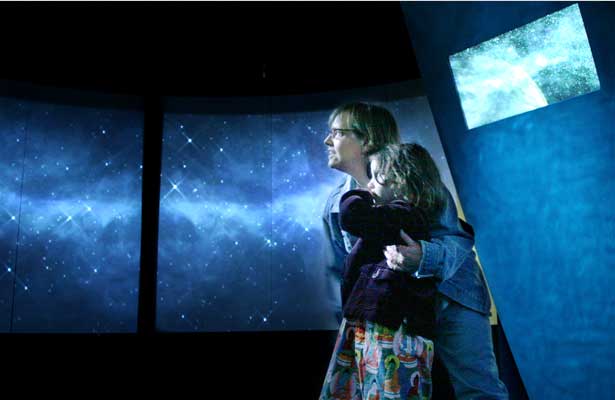
Students can now experience how astronauts exercise in space without chartering a space-shuttle ride to the stars.
Visitors to the exhibit, “Space: A Journey To Our Future” a new, interactive display at the North Carolina Museum Of Natural Sciences, are given a chance to experience what exercise in space would be like by using the Cyclitron.
“In space, because there is no gravity, there is nothing for muscles to work against, which causes them to become weaker,” said Jensen Tu, a participant in the museum’s outreach program.
Tu said that the Cyclitron works as a centrifuge to create a false sense of gravity that is used for just an hour a day, will help astronauts build and maintain muscles which will prevent detrimental effects on the body.
The Cyclitron is amongst other interactive displays in the 6,000 square feet exhibit. This area devoted to the displays makes “Space” one of the world’s largest touring space exhibitions, designed to take visitors through the past, present and future of space exploration.
Created in collaboration with NASA and sponsored by GM and Lockheed Martin, the exhibit is divided up into four sections: “Dare to Dream”, “A Dream Come True”, “Living the Dream” and “Dream of Tomorrow”.
The exhibit begins with “Dare to Dream”, a theme that pays tribute to the past thinkers and astronomers who contributed to the current knowledge about the universe. Visitors will encounter graphic displays that demonstrate the work of several early scientists, such as Galileo, Albert Einstein’s law of gravity and Edwin Hubble’s discovery of the Andromeda Galaxy.
“A Dream Come True” offers informative videos on the findings of the Magellan, Voyager and Genesis probes that covered early planetary exploration. This section of the exhibit also features a pictorial timeline, dating back to the Big Bang 14 billion years ago, that highlights significant space-related discoveries.
After visitors learn about the background of space exploration, they then progress into a more interactive environment. “Living the Dream” lets visitors experience what it is like to plan and complete a trip into space. Computer stations set up in the area provide visitors with the opportunity to pack for their mission in space, design a spacecraft and create and watch their own simulated Mars base camp.
“Living the Dream” also includes interactive stations where visitors can compare their weight on Earth to what they would weigh on Mars (1/3 Earth weight) and the moon (1/6 Earth weight).
Another one of the main highlights NASA included in the exhibit is the opportunity visitors have to touch an actual moon rock. The rock, composed of basalt and pyroxene, is one of the souvenirs from the 1971 Apollo 15 lunar explorations and is more than three billion years old.
The possibility of future life on Mars is the basis of the last section of the exhibit “Dream of Tomorrow”. A replica of a Mars Lander is available to show visitors a life-size view of what the living and working quarters of astronauts may someday be like.
Teri March, a docent for the space exhibit, said she believes that life on Mars is possible, but that it will not be confirmed unless more support is shown for space exploration.
“It’s been more than thirty years since we’ve sent someone into space. I hope that this exhibit will spark interest in people of all ages and show them that space is important. There are so many things out there to discover,” said March.